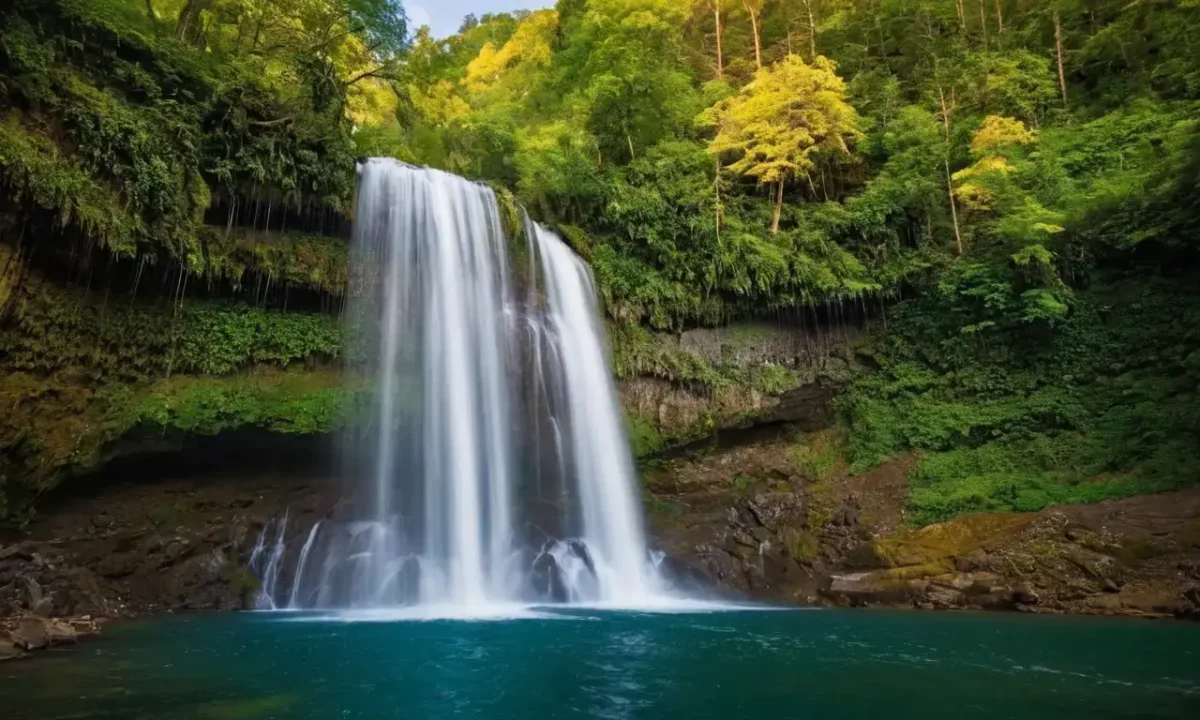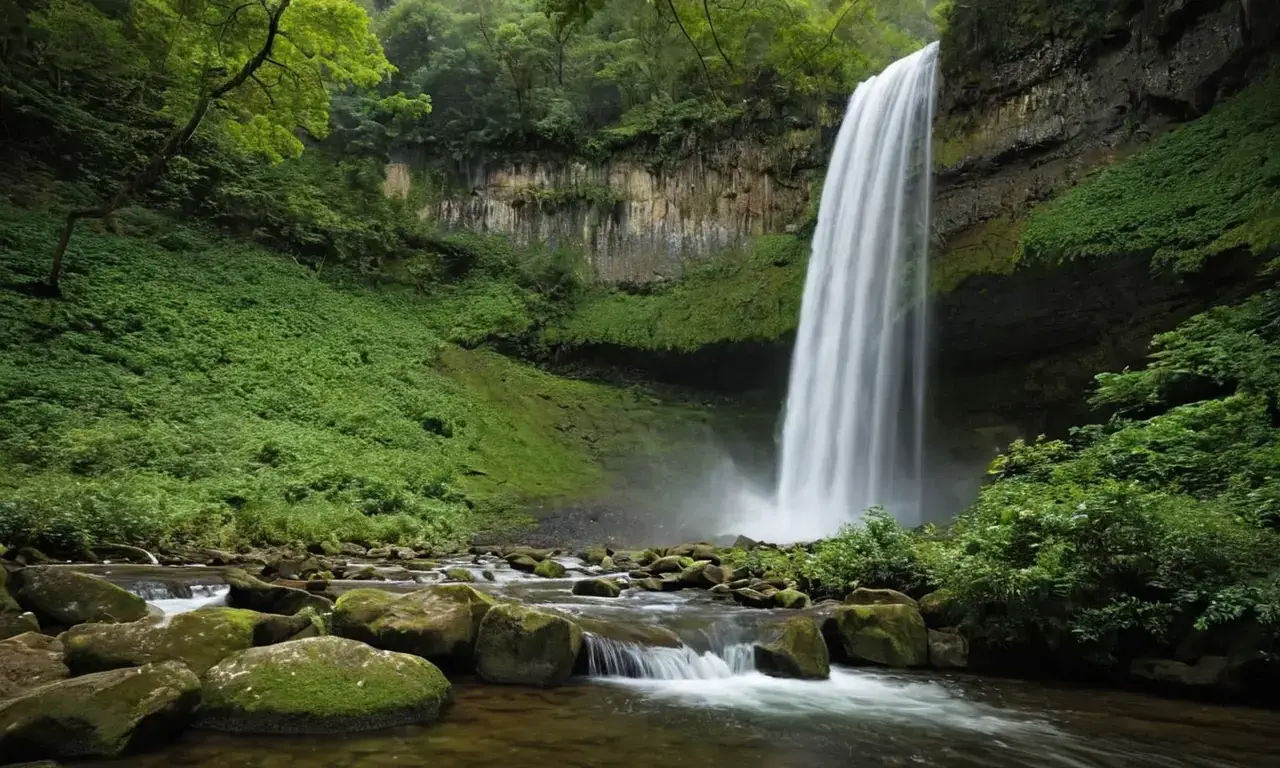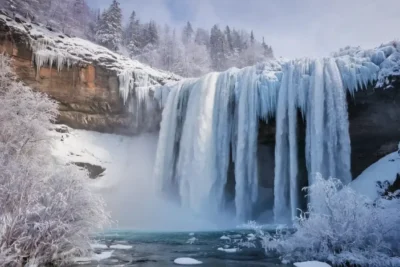
World's Tallest & Widest Waterfalls: A Natural Wonder

Waterfalls are captivating natural phenomena that embody the raw power and beauty of nature. These cascading waterfalls, where water plunges over a vertical or near-vertical drop, have fascinated humans for centuries. From majestic giants like Niagara Falls to hidden gems in remote corners of the world, these waterfalls offer a glimpse into the forces shaping our planet. Understanding the various criteria used to measure their size and impact helps appreciate their unique characteristics and the challenges they pose to both ecosystems and human endeavors.
This article delves into the world's tallest and widest waterfalls, exploring how height, width, flow rate, and even geological formations contribute to their grandeur. We will examine iconic examples like Angel Falls in Venezuela, Tugela Falls in South Africa, Victoria Falls in Africa, Iguazu Falls in South America, and Niagara Falls in North America. Additionally, we'll discuss the importance of water conservation around these magnificent waterfalls and highlight how understanding their significance can inspire responsible stewardship for future generations.
Criteria for Measuring Tallest & Widest Waterfalls
Waterfalls are measured based on various criteria, each offering a unique perspective on their scale. The most common measurements include height, width, and flow rate. Height refers to the vertical drop of water from the top of the falls to the base below. Width measures the horizontal expanse of the waterfall, often encompassing both sides of the cascading water. Flow rate quantifies the volume of water passing through a specific point per unit time, providing insight into the waterfall's energy and impact on its surroundings.
Height is typically measured from the top of the cascade to the base below, but some measurements consider the entire drop as one continuous height. Width can be measured at various points along the waterfall, depending on the desired focus. Flow rate is often determined using specialized instruments like flow meters or by observing water volume over a specific period.
While these criteria provide valuable insights into the scale of waterfalls, it's important to remember that each measurement offers a unique perspective on their grandeur. For example, while Angel Falls holds the record for the tallest waterfall in the world based on its vertical drop, Tugela Falls in South Africa boasts a wider expanse, showcasing the diverse ways we can appreciate these natural wonders.
Angel Falls, Tugela Falls, Victoria Falls, Iguazu Falls
Each of these iconic waterfalls stands out as a testament to nature's artistry and holds significant cultural and historical importance. Angel Falls in Venezuela is often considered the world's tallest waterfall, with its impressive height of 2,648 feet (807 meters). This breathtaking cascade plunges from the Auyán-tepui mountain range, creating a dramatic spectacle that has captivated explorers and nature enthusiasts for decades.
However, recent studies have challenged this long-held belief, suggesting that Tugela Falls in South Africa might be the true tallest waterfall based on its measured height. The sheer scale of this waterfall is truly awe-inspiring, with its cascading water spanning over 100 meters wide. This impressive width makes it one of the widest waterfalls in the world, showcasing the diverse ways nature creates breathtaking displays of power and beauty.
Victoria Falls in Africa stands as another iconic example of a massive waterfall. Spanning an incredible 5,604 feet (1,708 meters) wide, this waterfall is not only one of the largest but also boasts a significant cultural significance for the local communities who have lived alongside it for centuries. The roar of the falls echoes through the surrounding landscape, creating a symphony of nature that has inspired countless artists and writers throughout history.
Iguazu Falls in South America offers another captivating spectacle. This waterfall system comprises over 270 individual cascades, stretching across the border between Brazil and Argentina. Its sheer volume of water creates a mesmerizing display of power and beauty, making it one of the most visited waterfalls in the world. The intricate network of falls showcases the diverse ways nature shapes its landscapes, creating a truly unique experience for visitors from around the globe.
Finally, Niagara Falls in North America is another iconic waterfall that holds significant cultural importance. This massive cascade has been featured in countless works of art and literature, cementing its place as one of the most recognizable waterfalls on Earth. The sheer volume of water flowing over the falls creates a powerful spectacle that continues to inspire awe and wonder in visitors from all walks of life.
Niagara Falls and Other Notable Waterfalls
Niagara Falls is not only a breathtaking natural wonder but also holds a special significance for North America's history and culture. This iconic waterfall has been featured prominently in countless works of art, literature, and popular culture, cementing its place as one of the most recognizable waterfalls on Earth. The sheer volume of water flowing over the falls creates a powerful spectacle that continues to inspire awe and wonder in visitors from all walks of life.
Beyond Niagara Falls, numerous other notable waterfalls around the world offer unique experiences for those seeking to witness nature's raw power. For example, Yosemite Falls in California is known for its dramatic vertical drop and stunning beauty, while Bridal Veil Falls in Oregon offers a more intimate experience with cascading water that feels almost ethereal. These waterfalls showcase the diversity of natural landscapes and highlight how each location offers a unique perspective on the world's most awe-inspiring features.
Importance of Water Conservation Around These Falls

Waterfalls play a vital role in maintaining healthy ecosystems and supporting local communities. However, their vulnerability to human activities like tourism and climate change necessitates responsible water conservation efforts. As we continue to explore these magnificent waterfalls, it is crucial to prioritize sustainable practices that minimize our impact on the environment.
For example, initiatives focused on reducing water usage during tourist visits can help preserve the delicate balance of ecosystems around these iconic locations. Additionally, promoting eco-friendly tourism practices like hiking trails and responsible wildlife viewing can contribute to a more sustainable approach to appreciating nature's wonders. By prioritizing conservation efforts, we can ensure that future generations will continue to marvel at these natural treasures for years to come.
Conclusion
Waterfalls are not just breathtaking spectacles of nature; they also serve as reminders of the powerful forces shaping our planet. From the towering heights of Angel Falls to the vast expanse of Iguazu Falls, each waterfall offers a unique perspective on the world's diverse landscapes and ecosystems. Understanding the various criteria used to measure their size helps us appreciate these natural wonders in all their glory while acknowledging the importance of responsible water conservation for future generations.
By prioritizing sustainable practices and respecting the delicate balance of nature, we can ensure that these iconic waterfalls continue to inspire awe and wonder for years to come. As we explore these magnificent features, let's remember that our actions have a direct impact on the environment, and it is our responsibility to protect these natural treasures for generations to come.
Leave a Reply





Related Links